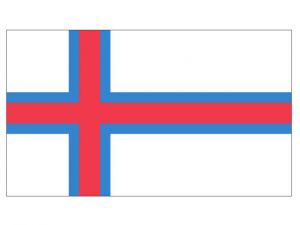Language/Faroese/Culture/Faroese-Folklore
| ◀️ Faroese Literature — Previous Lesson |
Introduction[edit | edit source]
In this lesson, we will explore the rich world of Faroese folklore, including legends, myths, and supernatural creatures. Faroese folklore plays a significant role in Faroese culture, shaping the beliefs and traditions of the Faroese people. By learning about Faroese folklore, you will gain a deeper understanding of the Faroese language and its cultural context. Throughout this lesson, we will delve into various aspects of Faroese folklore, providing examples and insights into the fascinating tales and creatures that have captivated the Faroese people for centuries. By the end of this lesson, you will have a newfound appreciation for the unique folklore that is deeply intertwined with the Faroese identity.
Legends and Myths[edit | edit source]
Legends and myths are an integral part of Faroese folklore. They are often passed down from generation to generation through oral tradition and have been preserved over the centuries. These tales serve as a way to explain natural phenomena, teach moral lessons, and entertain listeners.
One of the most famous Faroese legends is the story of the Nykur. The Nykur is a shape-shifting water creature that lures unsuspecting victims into the water. It is said to take the form of a beautiful horse and entice people to ride it. Once the person is mounted on its back, the Nykur jumps into the water, drowning its rider. This legend serves as a cautionary tale, warning against the dangers of the sea and the importance of being cautious.
Another well-known Faroese legend is the story of the Huldufólk, meaning "hidden people" or "elves." According to Faroese folklore, the Huldufólk are invisible beings that live in rocks and hills. They are believed to possess magical powers and can bring good fortune or misfortune to those who encounter them. The Huldufólk are deeply respected and revered in Faroese culture, with many people believing in their existence to this day.
Supernatural Creatures[edit | edit source]
Faroese folklore is teeming with supernatural creatures that have captured the imaginations of the Faroese people for centuries. These creatures often have unique characteristics and play specific roles in the folklore.
One such creature is the Nøkur, a sea serpent that is said to inhabit the waters surrounding the Faroe Islands. The Nøkur is described as a massive serpent with a horse-like head and a long, serpentine body. It is believed to have the power to control the weather and is often associated with storms and rough seas. The Nøkur is both feared and respected by the Faroese people, who have learned to navigate the unpredictable waters of the North Atlantic with caution.
Another intriguing creature in Faroese folklore is the Múlinn, a supernatural being that resembles a giant troll. The Múlinn is said to live in secluded caves and mountains, far away from human settlements. It is known for its immense strength and is often depicted as a guardian of nature. The Múlinn is believed to have the ability to shape-shift and can take on the form of various animals and objects. It is said to punish those who harm the environment and reward those who show respect and care for nature.
Cultural Significance[edit | edit source]
Faroese folklore holds immense cultural significance for the Faroese people. These tales and creatures are not just stories; they are deeply ingrained in the Faroese identity and reflect the values, beliefs, and experiences of the Faroese community.
Faroese folklore serves as a way to connect with nature and the elements. The tales of sea creatures and supernatural beings reflect the Faroese people's close relationship with the sea and their reliance on fishing for their livelihood. The stories of trolls and hidden people reflect the Faroese people's connection with the rugged landscapes of the islands and their respect for the natural world.
Furthermore, Faroese folklore plays a role in preserving the Faroese language. Many of the stories and legends have been passed down through generations in the Faroese language, contributing to the preservation and transmission of the language across time. By learning about Faroese folklore, you are not only gaining insight into Faroese culture but also strengthening your language skills and understanding of the Faroese language's unique characteristics.
Exercises[edit | edit source]
Now that you have learned about Faroese folklore, it's time to test your knowledge and apply what you've learned. Complete the following exercises to reinforce your understanding.
1. Match the following Faroese folklore creatures with their descriptions: a) Nykur b) Huldufólk c) Nøkur d) Múlinn
i) A shape-shifting water creature that lures people into the water. ii) Invisible beings that live in rocks and hills. iii) A massive sea serpent that controls the weather. iv) A giant troll-like creature that protects nature.
Solution: a) - i b) - ii c) - iii d) - iv
2. Discuss the cultural significance of Faroese folklore in your own words. How does it reflect the Faroese identity and values?
Solution: [Student's own answer]
Conclusion[edit | edit source]
In this lesson, we explored the fascinating world of Faroese folklore, including legends, myths, and supernatural creatures. Faroese folklore holds immense cultural significance and plays a vital role in shaping the Faroese identity. By learning about Faroese folklore, you have gained a deeper understanding of Faroese culture, strengthened your language skills, and delved into the unique tales and creatures that have captivated the Faroese people for centuries. Continue to embrace the rich folklore of the Faroe Islands as you progress in your Faroese language journey.
Videos[edit | edit source]
Faroese Chain Dance 1/2 - YouTube[edit | edit source]
Sources[edit | edit source]
Other Lessons[edit | edit source]
| ◀️ Faroese Literature — Previous Lesson |

